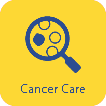What is gastroesophageal reflux disease?
Everyone vents air from their stomach through a process of natural relaxation of the esophageal sphincter. When food or stomach acids leak from the stomach back into the esophagus, it can be painful. This is gastroesophageal reflux disease or GERD.
GERD is the most common digestive problem with 40 percent of adults in the U.S. experiencing symptoms of GERD at least once a month and seven percent of adults with daily symptoms. Major symptoms of reflux are heartburn or acid regurgitation. Many of my patients ask, “What is heartburn exactly?” Heartburn is a burning sensation that begins at the xiphoid and rises behind the breastbone.
Other symptoms of GERD include odynophagia, which is painful swallowing; dysphagia, which is trouble swallowing; hypersalivation, which occurs when the saliva flow increases in an attempt to neutralize the acid; and some patients experience airway problems. The reflux can reach to the level of the trachea and, if inhaled, trigger asthma symptoms.
GERD can also cause chest pain so severe, patients are certain they are having a cardiac event. In the emergency room, the patient may be given nitroglycerin and feel some relief and then become perplexed when tests reveal no cardiac problem. To explain, nitroglycerin treats smooth muscle, including cardiac muscle as well as the muscles of the esophagus, thus slowing the reflux and easing the pain it can cause. (Please remember that it is important to seek immediate emergency medical attention if you experience chest pain, even if you aren’t sure it’s a heart attack.)
For most patients with GERD, diagnostic testing is unnecessary because the symptoms are so classic. If there are alarm symptoms such as gastrointestinal bleeding or trouble swallowing or if there has been no improvement with treatment, your gastroenterologist might examine the esophagus with upper endoscopy, a procedure that takes only 10 to 15 minutes but provides a wealth of information. A barium swallow is an X-ray test that has some limitations but can also provide valuable information in diagnosing and treating GERD. Another test that is very useful is 24-hour pH monitoring, which measures and tracks the amount of acid in the esophagus. While the pH of the esophagus is being measured, the patient will keep a diary of symptoms, which we can then correlate with the pH levels.
There are several treatment modalities which begin with lifestyle modification. Some patients report improvement by eliminating certain foods like citrus, tomato and fatty foods or by raising the head of the bed six to eight inches. However, those who have studied GERD report that only two lifestyle modifications will result in any improvement – if you are overweight, lose 10 percent of your weight. And, if you eat within three hours of going to bed, you will reflux. So don’t eat before bed. Approximately 20 to 30 percent of patients will experience improvement with lifestyle modification. About the same amount of patients improve with the use of antacids. H2 blockers and proton pump inhibitors are the next step in treatment. H2 blockers reduce the amount of acid in the stomach and proton pump inhibitors block the production of stomach acid, both of which can work to relieve symptoms of reflux. Laparoscopic surgery is appropriate in some cases to correct the problem causing reflux. The patients who do best with surgery are those who respond well to proton pump inhibitors.
GERD is a common problem that can have a serious impact on lifestyle. Over time, reflux can lead to precancerous changes in the esophagus. While all other gastrointestinal cancers have gone down in the last two decades, adenocarcinoma of the esophagus is the only cancer that has increased over the same timeframe. People who have had reflux for more than five years should talk to their doctor about testing.










